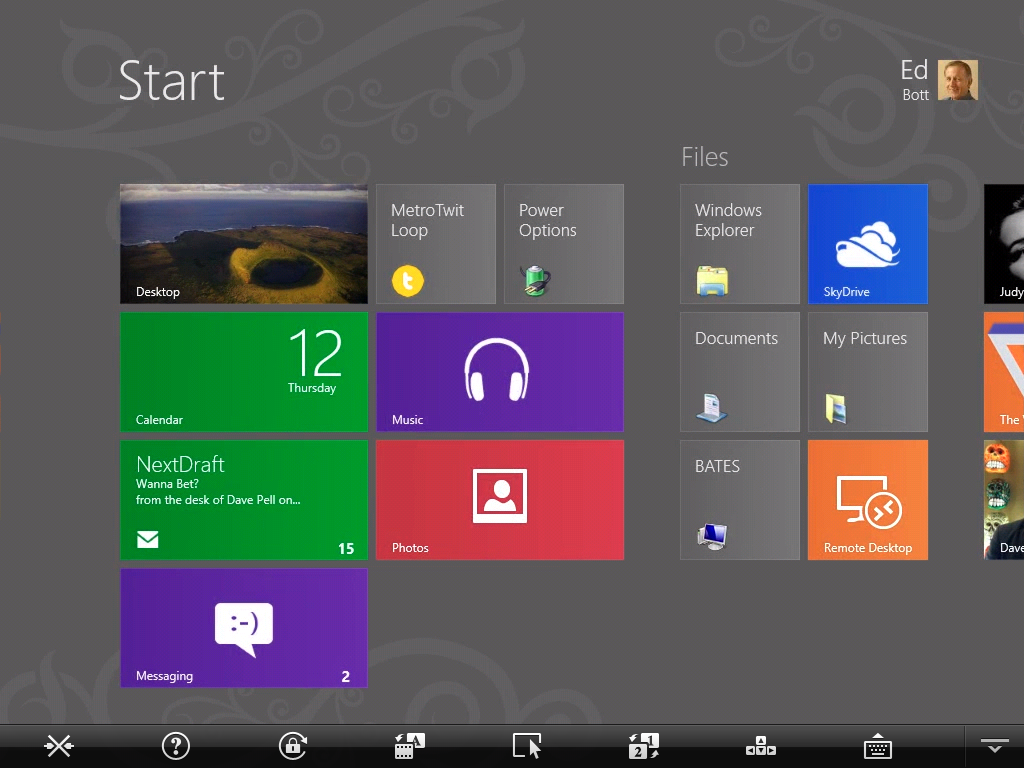Splashtop's new app lets developers run Metro apps on an iPad

Anyone developing a Metro app for Windows 8 faces a real dilemma: How do you test touch features without a smooth, touch-capable device built for Windows 8?
The best, most widely deployed touch hardware available today is, of course, Apple’s iPad. But you can’t run Windows 8 on an iPad, and widely used remote-desktop programs aren’t built with Windows 8 touch features in mind.
That’s where a new program called Win8 Metro Testbed comes in. It combines two pieces—an iPad app and a small “streamer” component that runs on a Windows 8 system. The combination offers a remote connection that is surprisingly responsive and faithful to the Windows 8 experience.
I had a chance this morning to experiment with the combo briefly. (Splashtop, which makes the app, provided me with a free code for review purposes.)
Installation from the iTunes App Store was simple: On the iPad, Win8 Metro Testbed starts quickly with the tap of an icon, just like any other app. On the target Windows 8 system, you download and install the small (15.7 MB) streamer file. Making the connection requires that you set up an alphanumeric passcode of at least 8 characters. After you tap the computer name on the iPad and enter the passcode, you can get to work.
What you see on the iPad is a faithful representation of what’s on the target system, as you can see in this screenshot:
The bar that runs across the bottom of the screen here is normally hidden, with only a small symbol visible in the lower-right corner of the screen. Tap that symbol once to display a full-sized keyboard, double-tap to display the Hints Control Bar. The icons on the Hints Control Bar enable specific features. You can lock the screen orientation, for example, or switch into Trackpad mode, where moving the finger mimics a mouse pointer instead of scrolling.
The on-screen keyboard seems redundant at first. After all, both the iPad and the Windows 8 touch interface have their own onscreen keyboards, don’t they? But Splashtop’s keyboard (which resembles the gray iPad keyboard more than the black Windows 8 version) offers a full set of Windows-specific keys not available on either native alternative, including function keys, the Alt key, and the Windows logo key. In essence, it’s a complete replacement for a physical Windows keyboard.
Update: A well-hidden option in the Windows 8 Consumer Preview menu (PC Settings, General, Make the standard keyboard layout available) lets you add a full standard keyboard that contains the normally hidden extra keys.
Responsiveness on the remote desktop was excellent, with very little lag over a WiFi connection. Apps snapped into position smartly, and there was no noticeable lag for common gestures like swiping from the right for the Windows 8 Charms menu or pinching to zoom an image. That’s to be expected, given Splashtop’s experience with remote-desktop software—its remote app is a perennial bestseller on the App Store.
The Splashtop Streamer includes the option to connect the Windows 8 client to a Google account, so that you can create a remote connection over the Internet. I didn’t test this scenario.
The biggest drawback of Splashtop’s clever solution is the native screen resolution of the iPad. With each connection, the desktop display adjusted itself to the iPad’s native resolution of 1024x768. That’s the minimum resolution for a Metro app, making it possible for a developer to test the functionality of an app running in full-screen mode. However, that resolution doesn’t support the snapped configuration, where an app is docked to the side of a screen. It’s possible to adjust the resolution of the iPad to 1366x768 (the minimum for snapped app support) or larger, but doing so makes for an ugly experience.
At a regular price of $50, the Win8 Metro Testbed isn’t cheap. For its launch, Splashtop is offering the app at half-price, $25. If you’re developing apps for Metro and you already own an iPad, it’s an easy and effective solution.
It's also ironic—and a sign of our changing times—that the first non-Metro commercial app built for Windows 8 is designed for the iPad.
